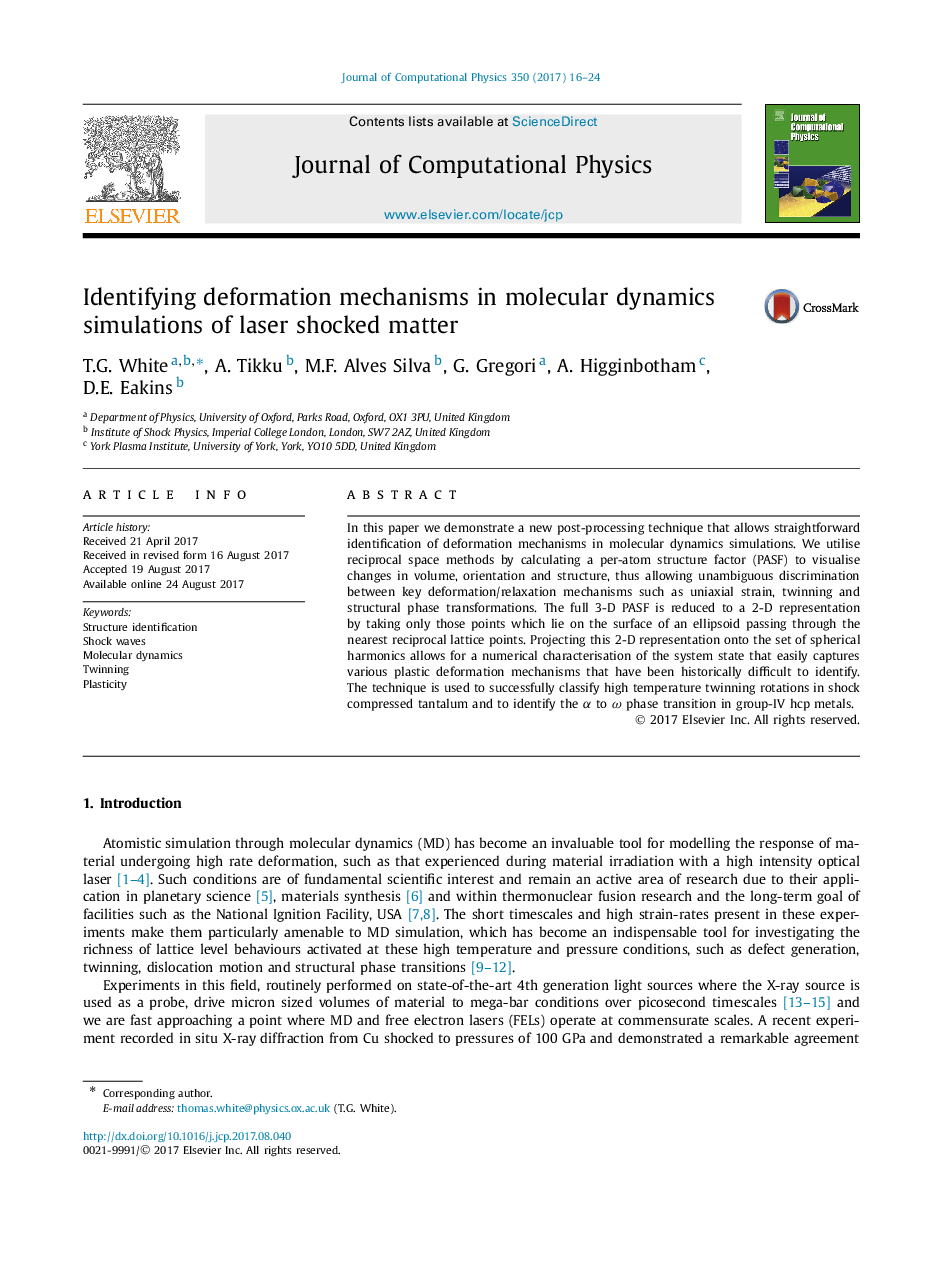| Article ID | Journal | Published Year | Pages | File Type |
|---|---|---|---|---|
| 4967067 | Journal of Computational Physics | 2017 | 9 Pages |
Abstract
In this paper we demonstrate a new post-processing technique that allows straightforward identification of deformation mechanisms in molecular dynamics simulations. We utilise reciprocal space methods by calculating a per-atom structure factor (PASF) to visualise changes in volume, orientation and structure, thus allowing unambiguous discrimination between key deformation/relaxation mechanisms such as uniaxial strain, twinning and structural phase transformations. The full 3-D PASF is reduced to a 2-D representation by taking only those points which lie on the surface of an ellipsoid passing through the nearest reciprocal lattice points. Projecting this 2-D representation onto the set of spherical harmonics allows for a numerical characterisation of the system state that easily captures various plastic deformation mechanisms that have been historically difficult to identify. The technique is used to successfully classify high temperature twinning rotations in shock compressed tantalum and to identify the α to Ï phase transition in group-IV hcp metals.
Related Topics
Physical Sciences and Engineering
Computer Science
Computer Science Applications
Authors
T.G. White, A. Tikku, M.F. Alves Silva, G. Gregori, A. Higginbotham, D.E. Eakins,
